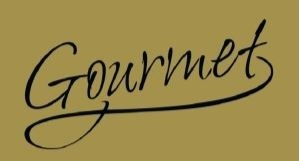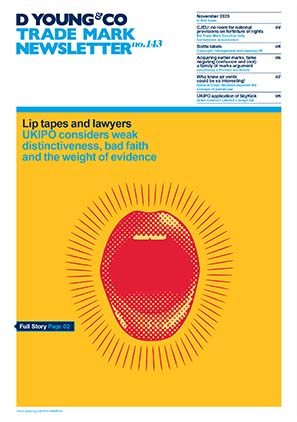GOURMET & INSIDE: General Court sets out requirements for evidence of genuine use
Two General Court decisions, Sympatex Technologies v EUIPO (INSIDE) and Transgourmet Ibérica SAU v EUIPO (GOURMET), provide clarification regarding the requirements for evidence of use.
Case T-372/21: Sympatex Technologies GmbH v EUIPO – INSIDE
Sympatex Technologies GmbH filed an European Union trade mark (EUTM) for SYMPATHY INSIDE, which included protection for classes 25 and 35. Liwe Española SA opposed this mark based on an earlier EUTM registration for the word INSIDE punctuated with a full stop afterwards ‘INSIDE.’ (the earlier mark), which also included protection for classes 25 and 35.
As Liwe’s mark was more than five years old at the time that the SYMPATHY INSIDE application was filed, Sympatex put Liwe to proof of use. The Opposition Division considered that the evidence of use filed by Sympatex did demonstrate genuine use of the mark for “clothing, footwear, headgear”. It partially upheld the opposition, rejecting the SYMPATHY INSIDE mark for class 25 and the part of the class 35 specification that related to the retail and wholesale of clothing, on the grounds that the marks were confusingly similar.
Sympatex appealed to the Board of Appeal which dismissed the appeal and the decision was appealed to the General Court.
The General Court’s decision
The General Court first addressed the issue of whether the evidence of use filed was genuine evidence of use. Liwe argued, inter alia, that the evidence of use.
- Did not show use of the earlier mark with the full stop; and
- The graphic representations of the earlier mark (shown below) altered the distinctive character of the mark as registered.

Given that the word element of the earlier mark (INSIDE) is its dominant and distinctive element, the General Court considered the omission of the full stop to be negligible.
The General Court held that as the earlier mark is a word mark, Sympatex is free to choose its presentation in the marketplace. Graphic representations of a word mark are acceptable for the purposes of proving use, provided that they do not alter the distinctive character of the mark as registered. The General Court followed the Board of Appeal’s approach, and focused its assessment on the first two graphic representations of the mark INSIDE, as these graphic representations featured frequently in the evidence filed. It held that the representation of the letters IN, within a circle, and SIDE, out of the circle, did not mean that the mark would be understood as two words. The letters are all placed on the same line without a space and are in the same size font. The General Court concluded that the evidence of use did not alter the distinctive character of the mark as depicted on the register and it was sufficient to show genuine use of the earlier mark for “clothing, footwear, headgear” in class 25.
The General Court confirmed that the Board of Appeal had been correct to find a low degree of visual and phonetic similarity between the marks, in addition to conceptual similarity amongst the section of the Spanish public which understands English. A likelihood of confusion was confirmed and the General Court dismissed the appeal.
Case T-102/22: Transgourmet Ibérica SAU v EUIPO - GOURMET
This decision focuses on the examination of evidence of use in relation to trade marks that have a low degree of distinctive character. It involved an unsuccessful declaration of invalidity filed by Transgourmet Ibérica, SAU against an EUTM Registration owned by Aldi GmbH & Co KG (shown below). Transgourmet relied on an earlier Spanish mark for the word mark “GOURMET”, which covered food related goods in class 30.

Transgourmet was required to file evidence of use of the mark GOURMET and the Cancellation Division held that the evidence filed did not demonstrate genuine use of the word mark. The decision was appealed to the Board of Appeal which dismissed the appeal on the grounds that the evidence did not show use as trade mark, and certain evidence demonstrated use in a form which altered the distinctive character of the mark as registered. Transgourmet appealed the decision further to the General Court.
The General Court's decision
In summary, the General Court held that:
- The Board of Appeal had erred in stating that GOURMET was descriptive of the class 30 goods
In cancellation proceedings before the EUIPO the validity of a national trade mark cannot be questioned. The fact that a national mark has been registered means that it has a minimum degree of inherent distinctive character and its validity can only be brought into question in cancellation proceedings before that member state. Consequently, the Board of Appeal’s characterisation of the term “gourmet” as descriptive of the goods at issue amounted to denying its distinctive character and so constituted an error of law. - In assessing genuine use, there is no requirement to examine the distinctive character of the earlier mark
There is genuine use of a mark where the evidence illustrates the mark is used to guarantee the identity of the relevant goods or services. The Board of Appeal had wrongly confined itself to examining whether GOURMET would be perceived as a descriptive term. Again, as the earlier mark had been registered it should have been treated as distinctive. It was apparent from the evidence filed that GOURMET had been used as a trade mark. The perception of the mark as a descriptive term should not have been taken into consideration in assessing its genuine use. - There is no hierarchy between items of evidence
Equal consideration should be given to all types of evidence of use, and there should be no hierarchy between items of evidence, for example: packages, labels, price lists, catalogues, invoices, photographs, newspaper advertisements, and statements in writing. - When assessing use of a mark, it is necessary to perform an examination of the distinctive and dominant character of both the intrinsic and additional elements
Variant use allows for use of a mark in a form differing in elements which do not alter the distinctive character of the registration. When assessing whether the distinctive character has been altered it is necessary to perform an examination of the distinctive and dominant character of any additional elements. Account must be taken of the intrinsic qualities and the greater or lesser degree of distinctive character of the earlier mark. Notably, the weaker the distinctive character, the easier it will be to alter it by adding a component that is itself distinctive.
The General Court held that the distinctive character of GOURMET had not been altered in the evidence of use filed (shown below).


It highlighted that when a mark is composed of word elements and figurative elements words are likely to be regarded as more distinctive, especially in this case where the figurative elements are neither striking nor dominant. Therefore, the Board of Appeal’s reasoning “that certain relevant goods are raw foodstuffs and not products cooked by a chef, which increases the distinctive character of the white chef’s hat” was not accepted. The additional figurative elements were held to be incapable of altering the distinctive character of the earlier word mark GOURMET.
The General Court annulled the Board of Appeal’s decision that Transgourmet had not demonstrated genuine use of its mark, and the case will be referred back to the Board of Appeal.
In short
If you register a word mark you can use graphic representations of that mark, as long as in doing so you do not alter the distinctive character of the mark. This is to allow businesses when commercially exploiting their mark to make variations of the mark that do not alter the distinctive character but allow the mark to be adapted to the conditions of the market for the goods and services concerned.
Punctuation in the mark applied for does not necessarily need to be replicated in use of the mark, so long as removing it does not alter the distinctive character of the mark.
When assessing whether the distinctive character has been altered it is necessary to perform an examination of the distinctive and dominant character of any additional elements.
Account must be taken of the intrinsic qualities and the greater or lesser degree of distinctive character of the earlier mark. Notably, the weaker the distinctive character, the easier it will be to alter it by adding a component that is itself distinctive
Useful links
- Case T-372/21, Sympatex Technologies GmbH v EUIPO – INSIDE:
dycip.com/caset37221 - Case T-102/22 Transgourmet Ibérica SAU v EUIPO – GOURMET: dycip.com/caset10222


